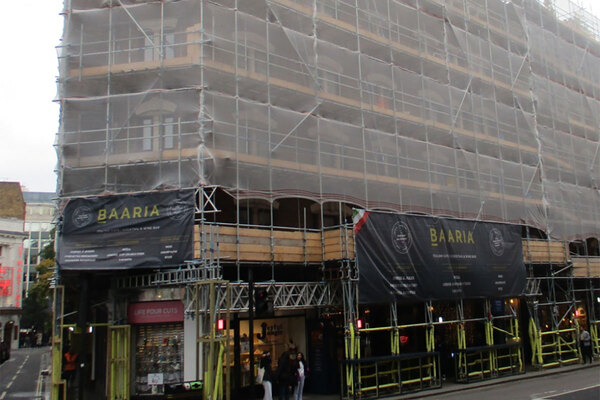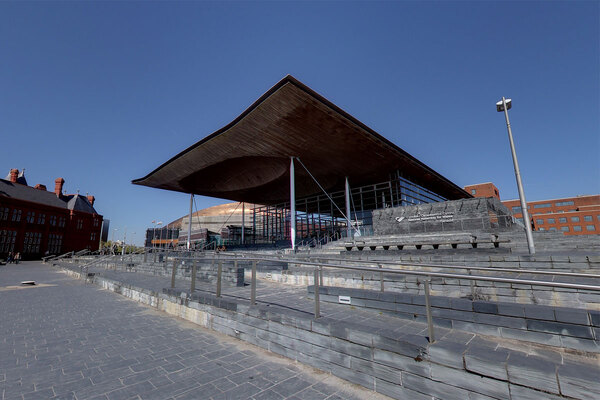You are viewing 1 of your 1 free articles
 Jules Birch
Jules BirchThere is some rare good news this April, as well as bad
Jules Birch summarises the changes to housing policy and legislation that come into effect in April.
Sometimes it feels like I’ve written a blog every year at this time with the headline ‘April is the cruellest month’.
It’s not that I have a TS Eliot fixation, nor (I hope) that I repeat myself endlessly, but because ever since 2010 the start of the financial year seems to have meant yet another benefit cut or housing policy change with which to cope.
This year is a bit different not so much because there is no bad news but because there is some good news as well.
Here are some examples:
- The U-turn on the withdrawal of support for housing costs for 18 to 21-year-olds under Universal Credit announced on Thursday. This was a cumbersome policy that required significant exemptions and barely saved any money but it’s still a significant change to the original pledge to make young people ‘earn or learn’.
- The Homelessness Reduction Act passed in 2017 applies from April 3.
The legislation should be a big step forward in ensuring that more people receive help earlier but despite a recent announcement on funding there are still well-founded concerns about whether councils have the money to implement it.
- Claimants already getting housing benefit who move on to Universal Credit will from April be paid an additional two weeks of housing benefit.
That may not be much consolation for the (in theory) five-week wait for their first Universal Credit but the payment (worth an average of £233) should ease the transition a bit – and it is not recoverable.
- It will be unlawful for landlords to give new tenancies on the least energy efficient property from April 1 – all rented property will have to qualify for at least an Energy Performance Certificate rating of E so (in theory) tenants will no longer be stuck paying high heating bills for the worst F and G property.
- More measures introduced against rogue landlords in the Housing and Planning Act 2016 come into force, including powers for councils to issue banning orders against the worst offenders and implementation of a database of landlords and letting agents convicted of some offences.
Remember too that it is not so long ago that I would have been writing about plans to apply a Local Housing Allowance (LHA) cap to social and supported housing from April 2018.
For all that good news, though, the suspicion remains that it will at best mitigate the impact of policies already implemented and still in the pipeline.
Despite a recent slight fall in homeless acceptances, the number of families in temporary accommodation continues to rise and the number of people rough sleeping is soaring.
“We are actually still only halfway into the post-2010 programme of benefit cuts”
The worry is that whatever the act can do to reduce homelessness will be counteracted by other policies that seem certain to expand it.
Perhaps significantly, the written statement by work and pensions secretary Esther McVey announcing the U-turn on 18 to 21-year-olds says that it is ‘in line with the government’s launch of the Homelessness Reduction Act and our commitment to eradicating rough sleeping by 2027’.
Is it any wonder, for example, that loss of a private rented tenancy is the main cause of homelessness when LHA rates are frozen until 2020 along with most other working age benefits?
This April will see some flexibility in targeted affordability funding but the freeze is still guaranteed to increase rent shortfalls for tenants.
For all the talk of austerity being over, we are actually still only halfway into the post-2010 programme of benefit cuts and rising inflation means the government is saving more money than it originally planned.
And all the other cuts remain in place: the benefit cap is also frozen at its reduced level; the bedroom tax ‘celebrates’ its fifth birthday on April 1; and cuts to council tax support will have even more of an impact when councils increase the bills significantly from April.
However, two other significant measures will start to affect homeowners from April.
The first is a milestone in the Help to Buy equity loan scheme for new build homes. It too marks its fifth birthday in April but that means a significant change in the terms of the loans.
The first five years of Help to Buy are interest-free, but after that borrowers will be charged a fee of 1.75 per cent of the loan value and rising each year after that by RPI plus 1 per cent.
So far 145,000 households have bought homes under the scheme. The first 2,000 of those took out their loans between April and June 2013 and will soon start having to make loan repayments on top of their mortgage.
The Resolution Foundation has estimated that the initial repayments will average £652 a year outside London and £927 in London.
However, those figures will rise over time – and note the sneaky use of the higher RPI measure of inflation to uprate the payments when one of the government’s first cuts after 2010 was to use the lower CPI measure to uprate benefits on the grounds that RPI was outdated.
As things stand, the government is sitting on a significant paper profit on the £7.4 billion of loans it has granted so far.
Help to Buy’s birthday will be celebrated not just in the boardrooms of the major housebuilders but also at the Treasury.
With that, plus a guaranteed income stream from loan repayments to come, plus the risk of losses if house prices were to fall, little wonder that ministers are reported to be considering a sale of the loan book.
The second measure is the conversion of Support for Mortgage Interest, the form of housing benefit paid to homeowners, into a loan from April 6.
"Help to Buy’s birthday will be celebrated not just in the boardrooms of the major housebuilders but also at the Treasury."
In 2017/18 110,000 households claimed an estimated £161m to help pay the interest on their mortgage.
This cost is ‘unsustainable’ according to the DWP despite being a third of what it was in 2010/11. The loan will be repayable when the home is sold or on the death of the last-surviving claimant.
The immediate worry is how many people will fail to apply for a loan, leaving the vulnerable to repossession as their mortgage arrears mount. If the process being managed by Serco does not inspire confidence, then reports that only 10,000 people have actually applied for loans and that around 65,000 current claimants are pensioners are really alarming.
There is some rare good news as March turns to April this year but not many people will feel like celebrating.
Jules Birch, award-winning blogger










